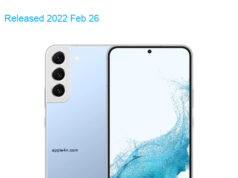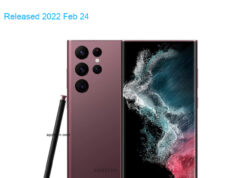| Brand | Nokia |
| Model | 2.4 Dual SIM LTE LATAM 64GB |
| Released | 2020 Sep |
| Announced | 2020 Sep 22 |
| Hardware Designer | HMD Global |
| Codename | HMD 2.4 |
| OEM ID | TA-1274 |
| General Extras | Haptic touch feedback |
| Device Category | Smartphone |
| Width | 76.3 mm |
| Height | 165 mm |
| Depth | 8.69 mm |
| Dimensions | 3×6.5×0.34 inches |
| Mass | 189 g |
| Platform | Android |
| Operating System | Google Android 10 (Q) |
| Software Extras | Voice Command , Navigation software , Intelligent personal assistant |
| CPU Clock | 2000 MHz |
| CPU | MediaTek Helio P22 MT6762, 2018, 64 bit, octa-core, 12 nm, IMG PowerVR GE8320 GPU |
| RAM Type | LPDDR3 SDRAM |
| RAM Capacity (converted) | 3 GiB RAM |
| Non-volatile Memory Interface | eMMC 5.1 |
| Non-volatile Memory Capacity (converted) | 64 GB ROM |
| Display Notch | 1-notch |
| Display Diagonal | 165 mm |
| Resolution | 720×1600 |
| Horizontal Full Bezel Width | 8.59 mm |
| Display Area Utilization | 80.9% |
| Pixel Density | 270 PPI |
| Display Type | Color IPS TFT LCD display |
| Number of Display Scales | 16.8M |
| Scratch Resistant Screen | Yes |
| Graphical Controller | PowerVR GE8320 |
| GPU Clock: | 650 MHz |
| A/V Out | No |
| Microphone(s) | stereo |
| Loudspeaker(s): | mono |
| Audio Output: | 3.5mm |
| Supported Cellular Bands | GSM850 , GSM900 , GSM1800 , GSM1900 , UMTS2100 (B1) , UMTS1900 (B2) , UMTS1700/2100 (B4) , UMTS850 (B5) , UMTS900 (B8) , LTE2100 (B1) , LTE1900 (B2) , LTE1800 (B3) , LTE1700/2100 (B4) , LTE850 (B5) , LTE2600 (B7) , LTE900 (B8) , LTE700 (B12) , LTE700 (B17) , LTE700 (B28) , LTE1700/2100 (B66) bands |
| Supported Cellular Data Links | GPRS , GPRS C12 , EDGE , EDGE MSC12 , UMTS , HSUPA , HSUPA 5.8 , HSDPA , HSDPA 7.2 , HSDPA 14.4 , HSPA+ 21.1 , DC-HSDPA 42.2 , LTE , LTE 100/50 , LTE 150/50 data links |
| SIM Card Slot | Nano-SIM (4FF) |
| Complementary Phone Services | Voice transmission , Voice speaker , Vibrate , Speakerphone , ANC , HD Voice , VoLTE |
| SAR (head) | 1.250 W/kg |
| Sec. Supported Cellular Networks: | No |
| Touchscreen Type | Capacitive multi-touch screen |
| Expansion Interfaces | TransFlash , microSD , microSDHC , microSDXC |
| USB | USB 2.0 |
| USB Services | USB charging , USB Host , USB OTG 1.0 , USB OTG 1.3 , USB PD |
| USB Connector | USB Micro-AB |
| Max. Charging Power | 5.0 W |
| Bluetooth | Bluetooth 5.0 |
| Wireless LAN | 802.11b , 802.11g , 802.11n |
| Wireless Services | Wi-Fi Tethering , Wi-Fi Calling |
| FM Radio Receiver | FM radio (76-90 MHz) with RDS |
| Complementary Satellite Services | Simultaneous GPS , A-GPS , Geotagging , QuickGPS |
| Supported GLONASS protocol(s) | L1OF |
| Supported Galileo service(s) | E1 |
| Supported BeiDou system (BDS) | B1I BeiDou receiver |
| Camera Placement | Rear |
| Camera Image Sensor | BSI CMOS |
| Image Sensor Pixel Size | 1.12 micrometer |
| Number of effective pixels | 13.0 MP camera |
| Aperture (W) | f/2.00 |
| Zoom | 1.0 x optical zoom |
| Focus | PD AF |
| Video Recording | 1920×1080 pixel |
| Flash | single LED |
| Camera Extra Functions | HDR photo , HDR video , Touch focus , Macro mode , Panorama Photo , Face detection , Smile detection |
| Aux. Camera Image Sensor | Mono CMOS |
| Aux. Cam. Image Sensor Pixel Size | 1.75 micrometer |
| Aux. Camera Number of Pixels | 1.9 MP aux. cam |
| Aux. Camera Aperture (W) | f/2.40 |
| Aux. 2 Camera Image Sensor | No |
| Aux. 3 Camera Image Sensor | No |
| Aux. 4 Camera Image Sensor | No |
| Secondary Camera Placement | Front |
| Secondary Camera Sensor | BSI CMOS |
| Secondary Camera Number of pixels | 4.9 MP sec. cam |
| Secondary Aperture (W) | f/2.40 |
| Secondary Video Recording | 1280×720 pixel |
| Secondary Camera Extra Functions | HDR photo , Face detection , Face tagging , Face retouch |
| Sec. Aux. Cam. Image Sensor | No |
| Built-in accelerometer | Yes |
| Additional sensors | FP sensor , L sensor , P sensor |
| Protection from solid materials | Yes |
| Protection from liquids | Yes |
| Battery | Li-ion polymer (LiPo) |
| Nominal Battery Capacity | 4500 mAh battery |
| Market Countries | Chile , Colombia , Peru |
| Market Regions | South America |
| Added | 2025-02-11 |
Specifications data description of this 📱Nokia 2.4 Dual SIM LTE LATAM 64GB📱
Title: Nokia 2.4 Dual SIM LTE LATAM 64GB: A Comprehensive Specification Guide 📊
Introduction:
Welcome to our latest blog post, where we’ll be taking a closer look at the Nokia 2.4 Dual SIM LTE LATAM 64GB. This device has been making waves in the market, and we’re excited to share its specifications with you. Whether you’re a tech enthusiast or just curious about what this phone has to offer, we’ve got you covered. So, without further ado, let’s dive in!
Lineup:
The Nokia 2.4 Dual SIM LTE LATAM 64GB is part of Nokia’s mid-range lineup, offering a balance of affordability and functionality. This phone is perfect for those who want a reliable device without breaking the bank.
Design:
The Nokia 2.4 Dual SIM LTE LATAM 64GB has a sleek and modern design, with a 6.5-inch HD+ display that boasts a 20:9 aspect ratio. The phone is available in two colors: Charcoal and Fjord. The device has a polycarbonate body with a ceramic-like finish, giving it a premium look and feel.
Specifications:
🌐 Network:
The Nokia 2.4 Dual SIM LTE LATAM 64GB supports dual SIM cards, allowing you to use two numbers on one device. It also supports 4G LTE networks, ensuring fast and reliable internet connectivity.
📅 Launch:
The Nokia 2.4 Dual SIM LTE LATAM 64GB was launched in September 2020.
🏋️ Body:
The phone measures 165.2 x 76.3 x 8.7 mm and weighs 195g. It has a physical fingerprint scanner on the back, providing an additional layer of security.
🌈 Display:
The Nokia 2.4 Dual SIM LTE LATAM 64GB has a 6.5-inch HD+ display with a resolution of 1600 x 720 pixels. The display has a 20:9 aspect ratio, providing a cinematic viewing experience.
🤖 OS 🛠️:
The phone runs on Android 10, with an upgrade to Android 11 available. It has a clean and intuitive interface, offering a smooth user experience.
🚀 Chipset 🔧:
The Nokia 2.4 Dual SIM LTE LATAM 64GB is powered by a MediaTek Helio P22 chipset, providing efficient performance and battery life.
💪 CPU 🖥️:
The phone has an octa-core processor with a clock speed of up to 2.0 GHz, ensuring fast and responsive performance.
🎮 GPU 💻:
The Nokia 2.4 Dual SIM LTE LATAM 64GB has a PowerVR GE8320 GPU, providing smooth graphics and gameplay.
🧠 Memory 🗂️:
The phone comes with 3GB of RAM and 64GB of internal storage, which can be expanded up to 512GB via a microSD card.
📷 Camera 🎥:
The Nokia 2.4 Dual SIM LTE LATAM 64GB has a dual-camera setup on the back, with a 13-megapixel primary sensor and a 5-megapixel depth sensor. The front camera has a 5-megapixel sensor for selfies.
🔈 Sound 🎵:
The phone has a 3.5mm headphone jack, providing compatibility with all your favorite wired headphones. It also has a single speaker, providing clear and loud audio.
📡 Comms 📶:
The Nokia 2.4 Dual SIM LTE LATAM 64GB supports Wi-Fi 802.11 b/g/n, Bluetooth 5.0, GPS, and USB 2.0.
💡 Features 🎁:
The phone has a range of features, including FM radio, face unlock, and a dedicated Google Assistant button.
🔋 Battery🔌:
The Nokia 2.








